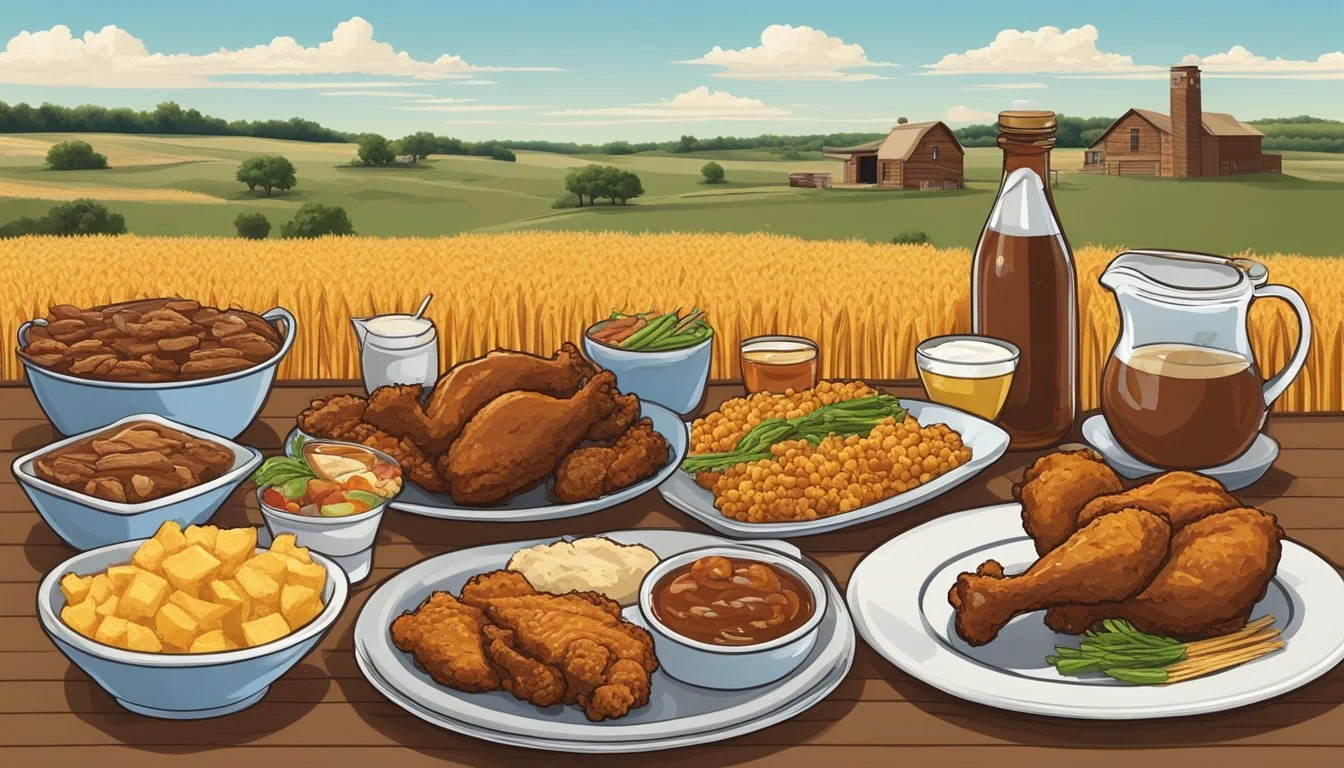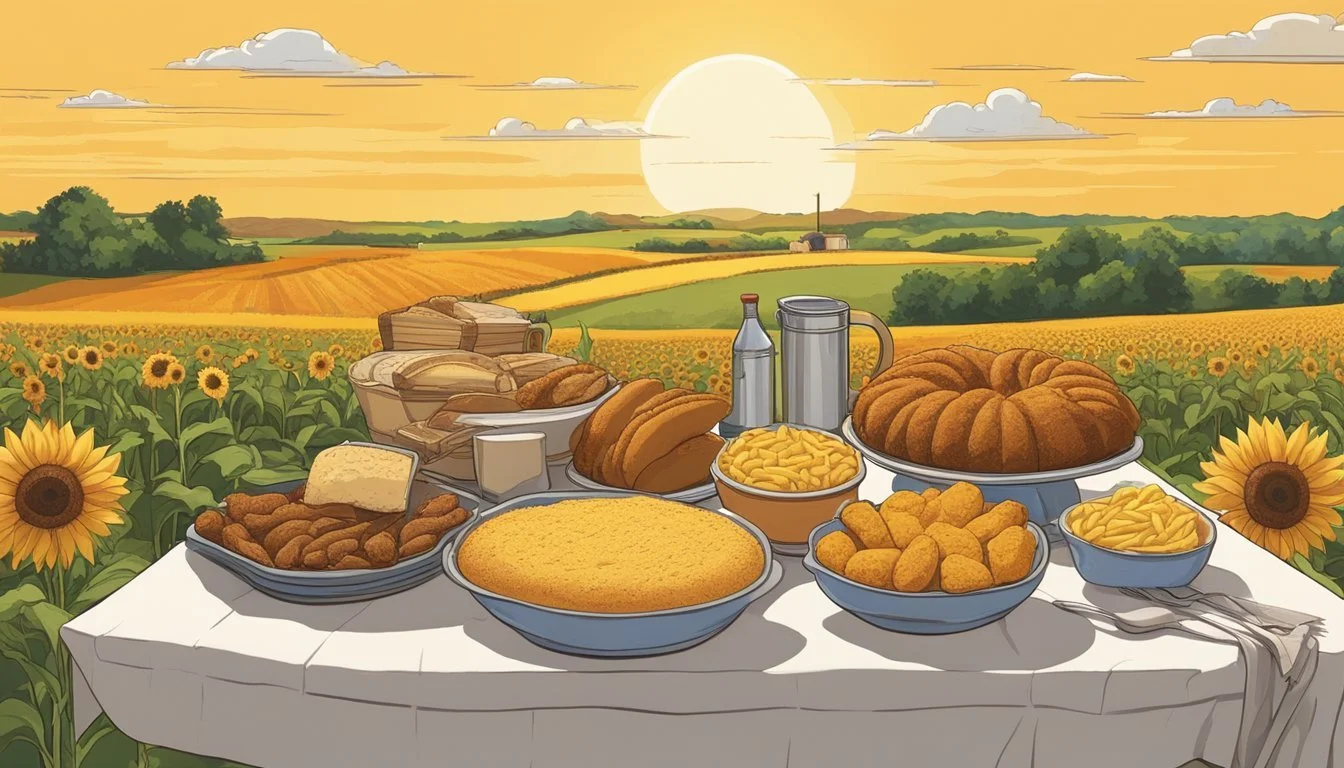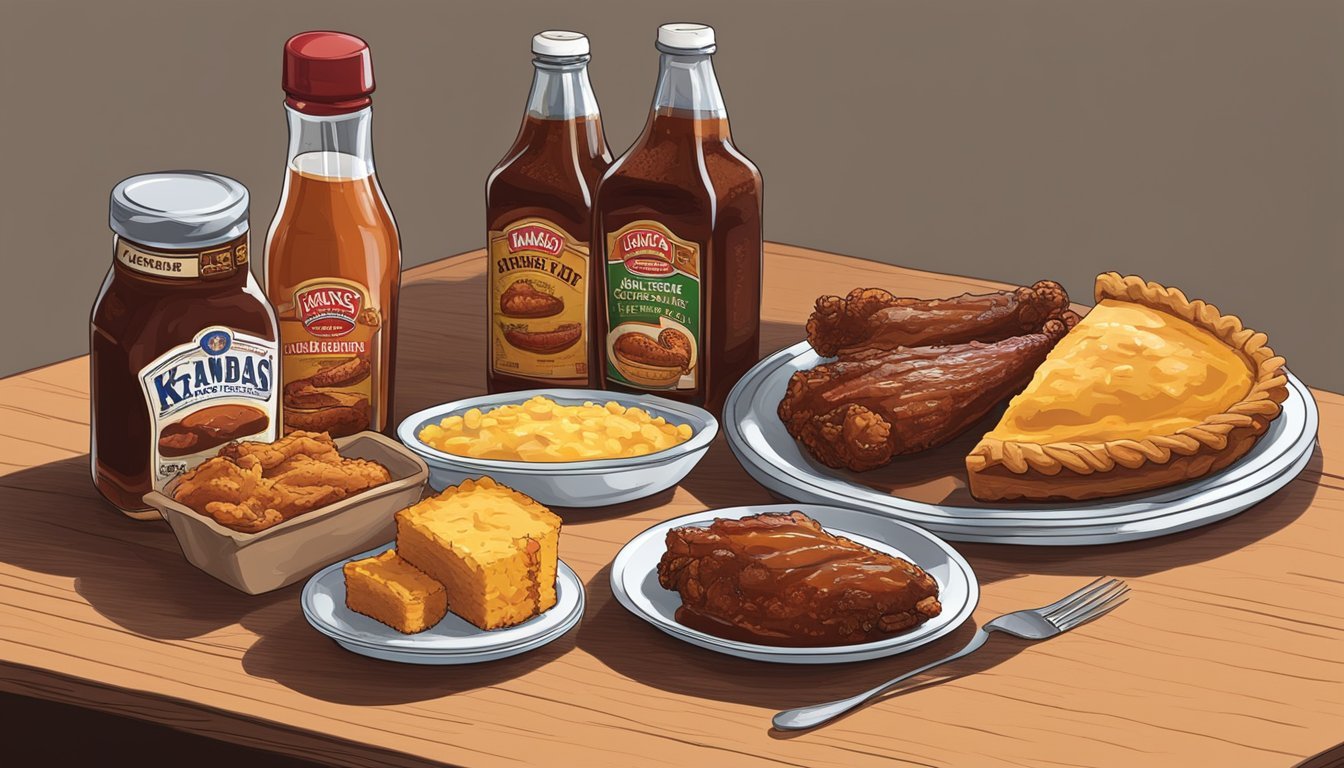What Food is Kansas Known for?
Unveiling the Sunflower State's Culinary Identity
Kansas boasts an array of foods that reflect its rich agricultural heritage and cultural diversity. Known for both its comfort food and traditional dishes, the state offers a culinary experience deeply rooted in local flavors. Visitors and residents alike cherish the combination of simple, hearty meals and iconic barbecue (What wine goes well with barbecue?) that underscores Kansas's contribution to American cuisine.
Barbecue, particularly the style that's developed in Kansas City, is a point of pride for Kansans. This entails slow-cooked meats that are typically slathered in a thick, tangy sauce with a hint of sweetness. Along with this, Kansas is home to unique local foods such as bierocks, which are doughy pockets filled with hamburger and cabbage – a dish brought over by German immigrants.
Apart from these, the state celebrates a variety of baked goods and confections such as zwiebach, a soft dinner roll made with a rich mixture of eggs, butter, and sometimes potatoes. The agricultural backbone of Kansas shines through in its homemade pies and whole wheat bread, incorporating grains grown on the local sun-drenched plains. These dishes are a testament to the state's philosophy of providing hearty and satisfying meals that have fueled generations of Kansans.
Historical Influences on Kansas Cuisine
Kansas cuisine reflects its rich history influenced by the settlers and the bountiful agriculture of the region. It is a blend of traditional methods handed down through generations and the natural resources provided by the land.
German Ancestors and Mennonite Dishes
The state's German ancestors, especially Mennonites, brought with them a comfort food tradition that remains a staple in Kansas today. Mennonite dishes such as Zweiback, a type of double-baked bread, pot roast, and hearty stews, showcase the Mennonites' skill in creating fulfilling dishes that could sustain families through hard work and harsh winters. Their culinary influence is rooted in their emphasis on communal meals and the sharing of food that is both nourishing and simple.
Agricultural Roots and Wheat Production
Kansas, often called "The Wheat State," owes much of its food identity to its extensive wheat production, which is a cornerstone of its agricultural economy. Wheat and farmland stretch across the state's landscape, shaping both the agricultural practices and the everyday diet of its people. Locally grown wheat is the backbone of Kansas baking, found in homemade bread, pies, and pastries—a testament to the state's rich agricultural roots. The fertile Kansas soil, combined with the hardworking ethos of its farmers, has ensured that agriculture remains at the heart of the state's food culture.
Iconic Kansas Foods
Kansas cuisine is characterized by its hearty, comfort foods and distinct barbecue flavors unique to the region. The state takes pride in a range of signature dishes from savory meats to sweet desserts, each reflecting its cultural heritage and culinary innovations.
Barbecue and Kansas City Influence
Kansas' barbecue is renowned for its slow-smoked meats (What wine goes well with smoked meats?), with Kansas City Barbecue standing as a point of pride. The city straddles the border of Kansas and Missouri, creating a melding pot of flavors. Kansas City is especially known for its ribs and burnt ends, the flavorful pieces of meat cut from the point half of a smoked brisket. The barbecue sauce used in Kansas City-style barbecue tends to be thick, tomato-based, and sweet with a touch of tanginess.
Famous Savory Dishes
The influence of German immigrants in Kansas' culinary scene is apparent through dishes like Bierocks. These are doughy pockets filled with a savory mixture of hamburger and cabbage. Another staple in Kansas' savory lineup is chili, often served with a side of cinnamon rolls, an unexpected yet beloved combination statewide.
Savory Dishes in Kansas Description Bierocks German-influenced meat and cabbage filled rolls Chili and Cinnamon Rolls Spicy chili paired with sweet, soft cinnamon rolls
Sweet Treats and Desserts
Kansas also has a sweet side, with desserts like Kansas Dirt Cake, made with layers of creamy vanilla pudding and soft Oreo crust, and homemade pies which are a Kansas tradition, with apple, cherry, and peach being popular flavors among locals.
Desserts in Kansas Description Kansas Dirt Cake A pudding-based dessert with Oreo crust Pies Varieties include apple, cherry, and peach
These dishes only scratch the surface of the vibrant culinary scene in Kansas, as they continue to create and serve foods that remain true to the state's roots and identity.
Agricultural Bounty
Kansas stands as a central pillar in the United States’ agricultural landscape, known mainly for its substantial contribution to wheat production and livestock farming.
Wheat and the Breadbasket of America
Kansas is often referred to as the "Breadbasket of America," a title earned through its vast wheat fields stretching across the state's plains. In 2021, Kansas farms produced 319 million bushels of wheat from 7 million harvested acres. This impressive volume accounts for nearly 18% of all the wheat grown in the U.S., solidifying its status as a national leader in this crucial crop.
Major wheat-producing areas:
Central and western regions of Kansas.
Particularly high yields in counties within the central corridor of the state.
The state's geographical position in Tornado Alley does not impede its wheat cultivation success. Instead, the typical climate and soil conditions found in Kansas are ideal for wheat, allowing farmers to thrive despite the harsh weather risks.
Livestock and Meat Production
Livestock, especially cattle, represent another significant sector in Kansas's agricultural bounty. Notably, Dodge City has become synonymous with beef processing, and Kansas overall is a leader in beef production. These activities contribute considerably to the state's economy, with grain-fed cattle from feedlots being a staple output.
Key figures for livestock and meat production:
Beef: A cornerstone of the industry, with Kansas ranking high among the states for beef production.
Grain Sorghum: (how long does sorghum last?) Utilized as feed in the robust cattle industry.
Kansas's status as a top producer in grain sorghum — leading the nation with a stunning yield of 194 million bushels — supports its livestock farming by providing ample and nutritious feed for cattle. Together, these two subsections of agriculture form the bedrock of Kansas's contributions to the American food system.
Contemporary Food Scene
Kansas' food scene is a dynamic mix of tradition and innovation, reflecting its deep Midwestern roots while embracing contemporary trends. The state's culinary landscape is marked by a steadfast commitment to local sourcing and a lively dining scene that keeps evolving.
Farm-to-Table Movement
In cities like Topeka and throughout the state, a dedicated farm-to-table movement underscores the importance of local foods in Kansas' cuisine. This ethos focuses on building relationships between farmers and chefs, resulting in dishes that highlight the Bounty of the Midwest. Seasonal menus in these eateries often feature comfort foods that are reinvented with a modern twist, showcasing the freshest ingredients from nearby farms.
Local Farms: Collaborations with Kansas farms
Seasonal Dishes: Regularly updated menus to reflect available produce
Emerging Trends in Kansas Dining
Kansas City is at the helm of culinary innovation in the state, infusing traditional comfort foods with new flavors and techniques. The city's vibrant dining scene is a testament to its openness to new ideas while staying true to its rich culinary heritage.
Kansas City Barbecue: An evolution of styles, incorporating bold, contemporary flavors into the legendary barbecue tradition.
Culinary Fusion: Chefs are increasingly experimenting with cross-cultural dishes, blending Midwest staples with international influences.
By honoring their roots while exploring new culinary frontiers, Kansas chefs offer diners an exciting and evolving table of choices.
Food Culture and Traditions
Kansas' food landscape is deeply intertwined with its history and agriculture, offering a range of flavors that reflect its moniker, the Sunflower State. Its culinary traditions are steeped in both regional produce and historical influences, creating a distinctive dining experience.
State Symbols and the Sunflower State
Kansas, commonly referred to as the Sunflower State, holds the sunflower as its state flower and the bison (What wine goes well with bison?) as its state animal. These symbols represent a broader agricultural heritage that is reflected in the region's cuisine. The state’s fertile farmlands yield crops that are central to its food culture, influencing both home cooking and restaurant fare. Kansas grows wheat extensively, which is used in local bread specialties such as bierocks, doughy rolls filled with meat and cabbage that celebrate the region’s German Russian immigrant heritage.
Festivals and Food Events
Throughout the year, Kansas celebrates its culinary heritage through a variety of festivals and food events, providing authentic experiences of the state's gastronomy. The Kansas State Fair is a notable event showcasing local foods, while the American Royal Barbecue Contest, hosted annually in Kansas City, puts the spotlight on Kansas City's world-famous barbecue. Here, enthusiasts can savor meats slathered with rich, thick barbecue sauce that has a sweetness offset by a peppery kick. These events provide locals and visitors alike with an opportunity to immerse themselves in the flavors that make Kansas' food culture unique.
Notable Figures and Culinary Contributions
Kansas boasts a rich culinary tradition shaped by notable figures who have left indelible marks on the state’s food scene.
Famous Personalities from Kansas
Kansas has been the birthplace or home of various influential figures whose legacies extend well beyond the kitchen. For instance, Amelia Earhart, the famed aviator from Atchison, became an inspiring figure for challenging norms and pursuing lofty ambitions. Although not directly linked to culinary arts, her spirit of adventure and excellence resonates in the bold flavors found in Kansas cuisine.
The state's cultural contributions, like The Wizard of Oz, with its iconic character Dorothy, have indirectly influenced Kansas’s culinary identity, much like how stories of a place can add a layer of narrative to its dishes. These personalities and stories shape the backdrop against which Kansas's food traditions are celebrated.
Influential Kansas Chefs and Pitmasters
Kansas's culinary scene has also been shaped by chefs and pitmasters who have honed their craft over fire and spice. While specific chefs’ names are not well-documented in widely-known resources, the influence of pitmasters, particularly in Kansas City, is undeniable. The barbecue style, reputed for its slow-cooked ribs, brisket, and distinctive sauces, owes much to the historical figure Henry Perry, who in 1908 began serving smoked meats to an eager public. His legacy is carried on by a profusion of barbecue joints that each offer a unique take on this tradition that is central to Kansas’s identity.
The state's chefs continue to innovate, drawing upon Kansas's agricultural heritage to create dishes that speak to both the past and the future of Kansas's food culture. They contribute new chapters to the state's culinary story, ensuring that Kansas remains not just a historical waypoint, but a living, evolving gastronomic destination.







